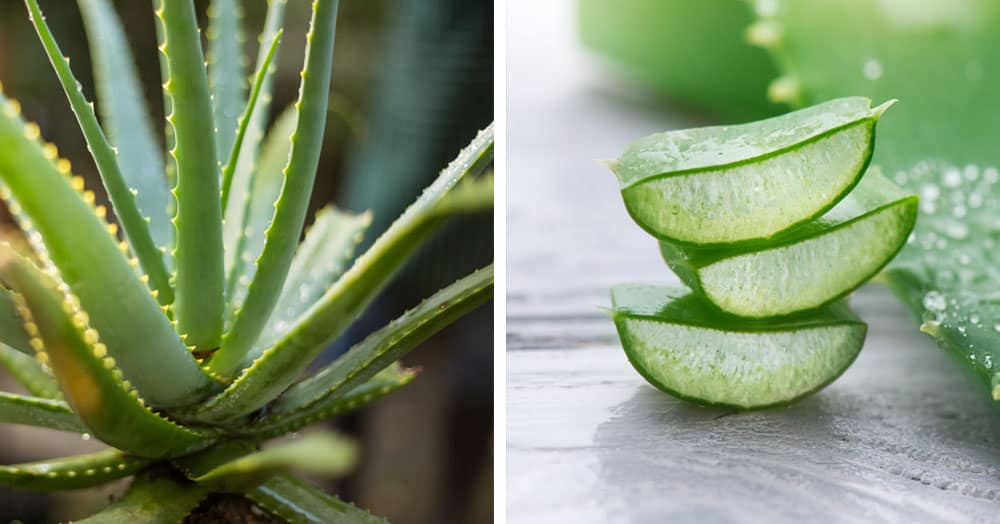Aloe there, plant fanatics—here’s a crash course on how to care for your favorite spiky succulent, the aloe plant. Its long, plump, sword-like leaves grow upward, with little serrations along the edge. Don’t worry; they aren’t sharp like a cactus, and it won’t hurt you if it makes contact with your skin. Quite the opposite, actually!

Aloe Vera: The Plant That Cares For You In Return
You might recognize the name from your bottle of after-sun lotion, and that’s because aloe vera plant leaves are filled with a soothing gel carrying powerful medicinal properties. This gel can be applied directly to the skin, healing burns and calming itchy, irritated patches. If you learn how to care for an aloe vera plant, you can crack off a leaf and squeeze out some gel whenever you’ve had a bit too much sun.
Keep in mind; there are different varieties. Aloe vera is undoubtedly the most popular variety because of its incredible healing powers, but there are many more beautiful cultivars that don’t boast the same skin-calming effects. Either way, they’re beautiful to look at and easy to care for, so it’s certainly worth adding a few to your collection!

How Often Do You Water an Aloe Plant?
As with any other succulent, the aloe plant stores lots of moisture in its leaves. It uses those moisture reserves to stay alive longer without needing a top-up on water. After all, they’re native to desert climates and are well accustomed to hot, dry, sunny weather.
The general recommendations for how often to water an aloe plant are: once every 2–3 weeks from spring to fall, and once per month in winter. Don’t overwater it—just moisten the soil with an inch or two of water. If your plant is getting too much water, the leaves will turn brown and mushy, and they may blister. If your plant isn’t getting enough water, the leaves will pucker and look dehydrated.

Do Aloe Plants Need Direct Sunlight?
One of the most critical aspects of learning how to care for your aloe plant is ensuring it’s getting enough sun. Bright, direct sunlight is essential to keep these guys happy! Inadequate sunlight will result in a wonky, uneven shape. Indoor aloe plants will do best in a South- or West-facing window where they’ll get at least 6 hours of direct sun per day. Strange how 6 hours of sunshine will make your plant more beautiful, whereas 6 hours of direct sun for us results in a desperate need for more aloe.
Aloe Plant Care: Soil and Fertilizer
The best kind of potting mix for your aloe plant is something loose and sandy, specifically formulated for succulents and cacti. These types of soils have quick drainage and aren’t as likely to get soggy and waterlogged, especially if your container has drainage holes. Most high-quality potting mixes are fortified with fertilizers, nutrients, and organic matter that will feed your plant.

Aloe isn’t a particularly heavy feeder, so you don’t need to add additional fertilizer as often as you would with your other houseplants. If you decide to fertilize, use a high-phosphorus, water-soluble formula, dilute it at half strength, and apply it once per year in the spring.
Our Favorite Aloe Varieties
In addition to the classic aloe vera plant, we carry several other beautiful varieties, including:
- Aloe Brevifolia
- Walmsley’s Bronze
- Walmsley’s Blue
- Aloe Marlothii
- Aloe Variegata
- Aloe Nobilis
- Aloe Cameronii
- Blue Elf
- Crosby’s Prolific
- Aloe Hercules
If you’re on the hunt for aloe vera plants for sale, or any of our other distinctive varieties, head down to OC Succulents! We carry all different colors, shapes, and sizes to suit your indoor or outdoor plant displays. Our knowledgeable staff will be happy to help you find the perfect variety!


